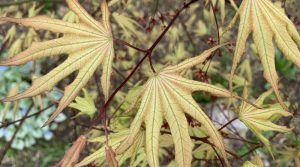Sawa Chidori Japanese maple is another one of the sought after variegated varieties. It’s unfortunately less popular among Acer Palmatum collectors, often overshadowed by the more marketable “Ghost” cultivars. While it may not be as colorful as Amber Ghost, Sawa Chidori still puts on on a glorious show throughout the spring and briefly in the fall.
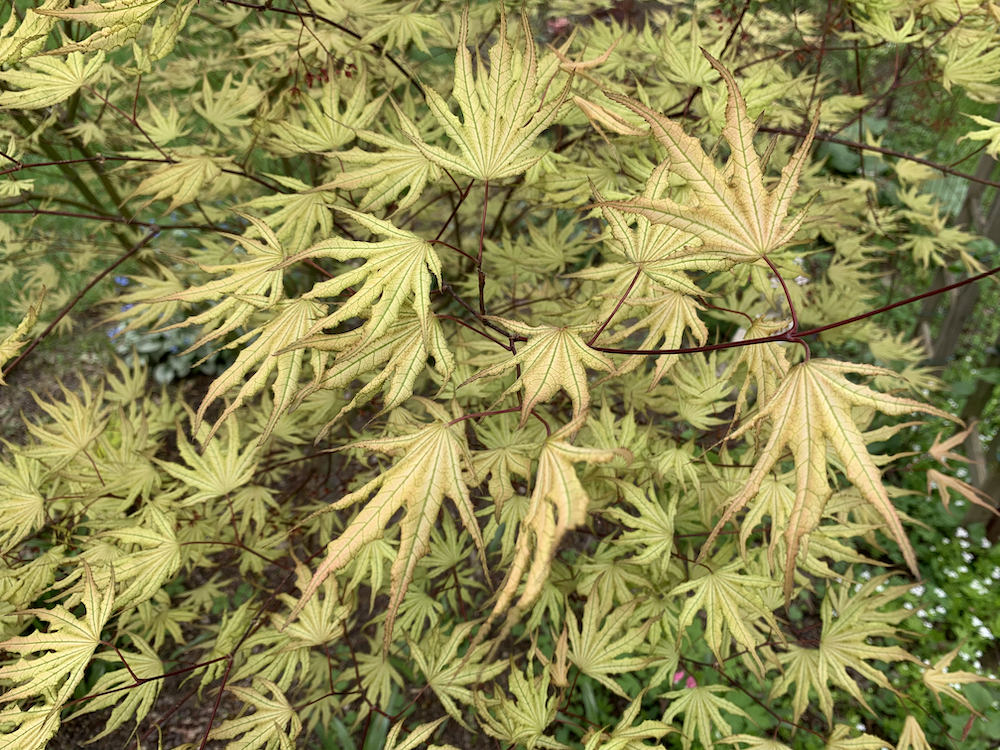
Cultivar Origin
The Sawa Chidori cultivar was first introduced in 1988. The name means “Marsh Plover,” most likely chosen for the resemblance to the bird’s speckled feathers.
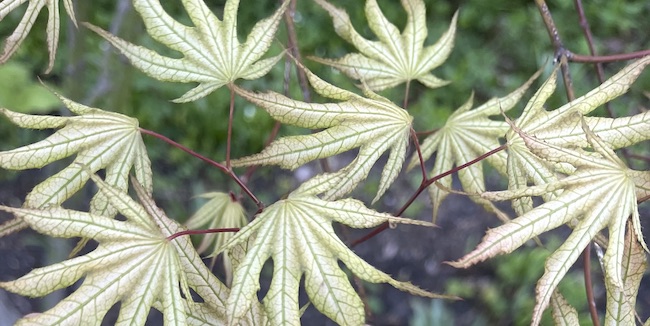
Sawa Chidori Leaves
The show begins in April and May as the large burgundy buds begin to swell. When they finally burst, you’re greeted by pale, cream colored foliage surrounded by the tattered, deep maroon remnants of the buds. The colors are almost vintage-inspired: aged doilies and burgundy felt.
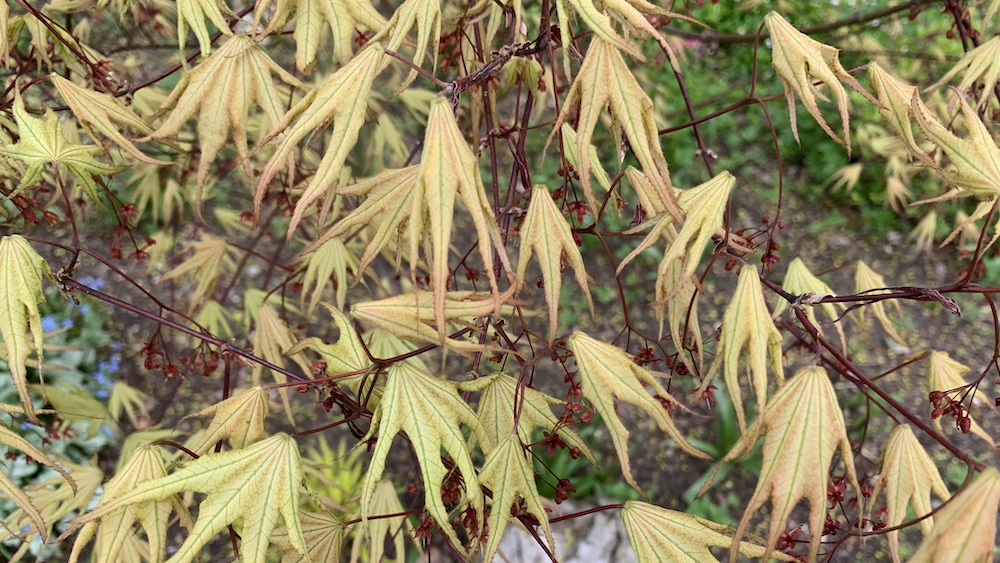
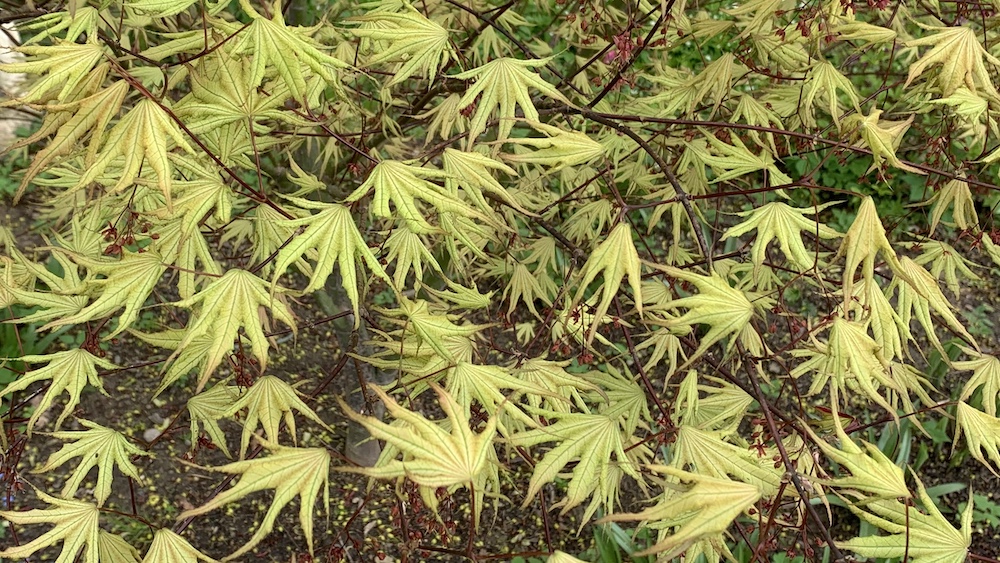
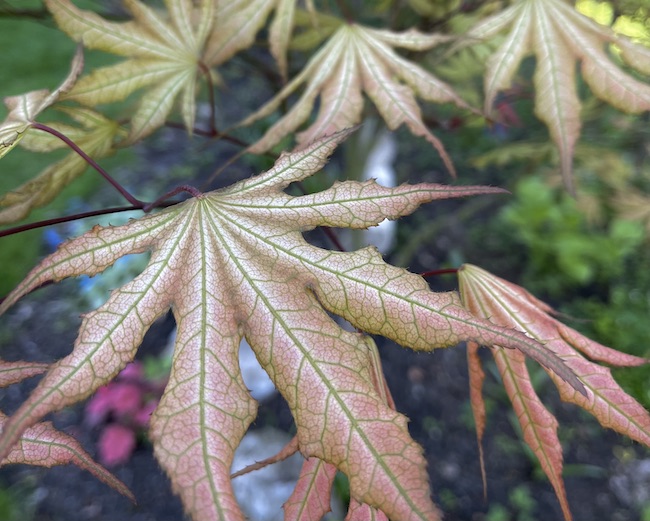
Acer Palmatum Sawa Chidori’s leaves emerge creamy white with rose and peach frosted edges and vibrant green veins. The soft amber shading of the leaves gives them a 3D appearance even when they’re completely flat.
Before long, the warm amber colors fade, leaving behind a mix of pale cream and glowing yellow-green tones with bronzed tips.
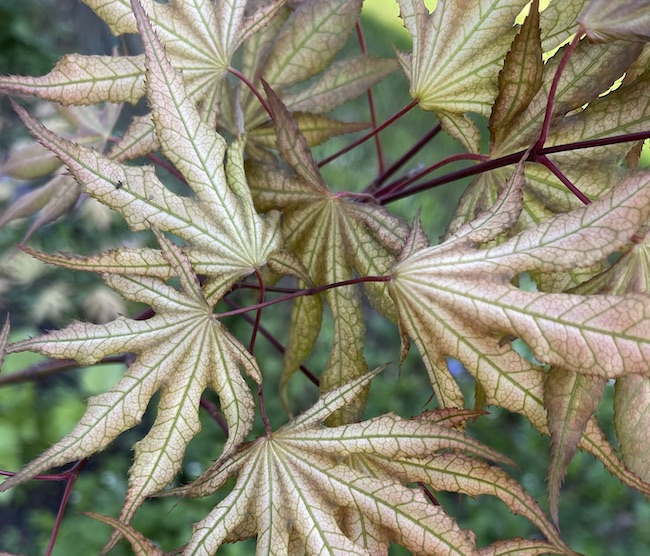
As June progresses, the yellows shift to vibrant greens, with shaded leaves retaining a milky white reticulation.
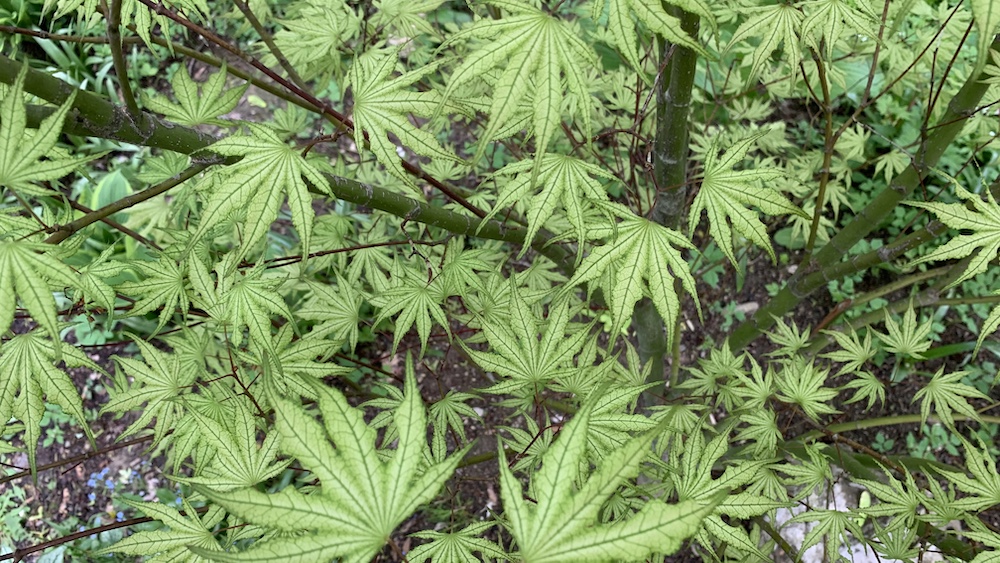
Sawa Chidori Fall Color
Finally, in the fall, the tree puts on a last fiery show of glorious red with a slight pinkish orange tone. The red leaves are absolutely spectacular against the green bark.
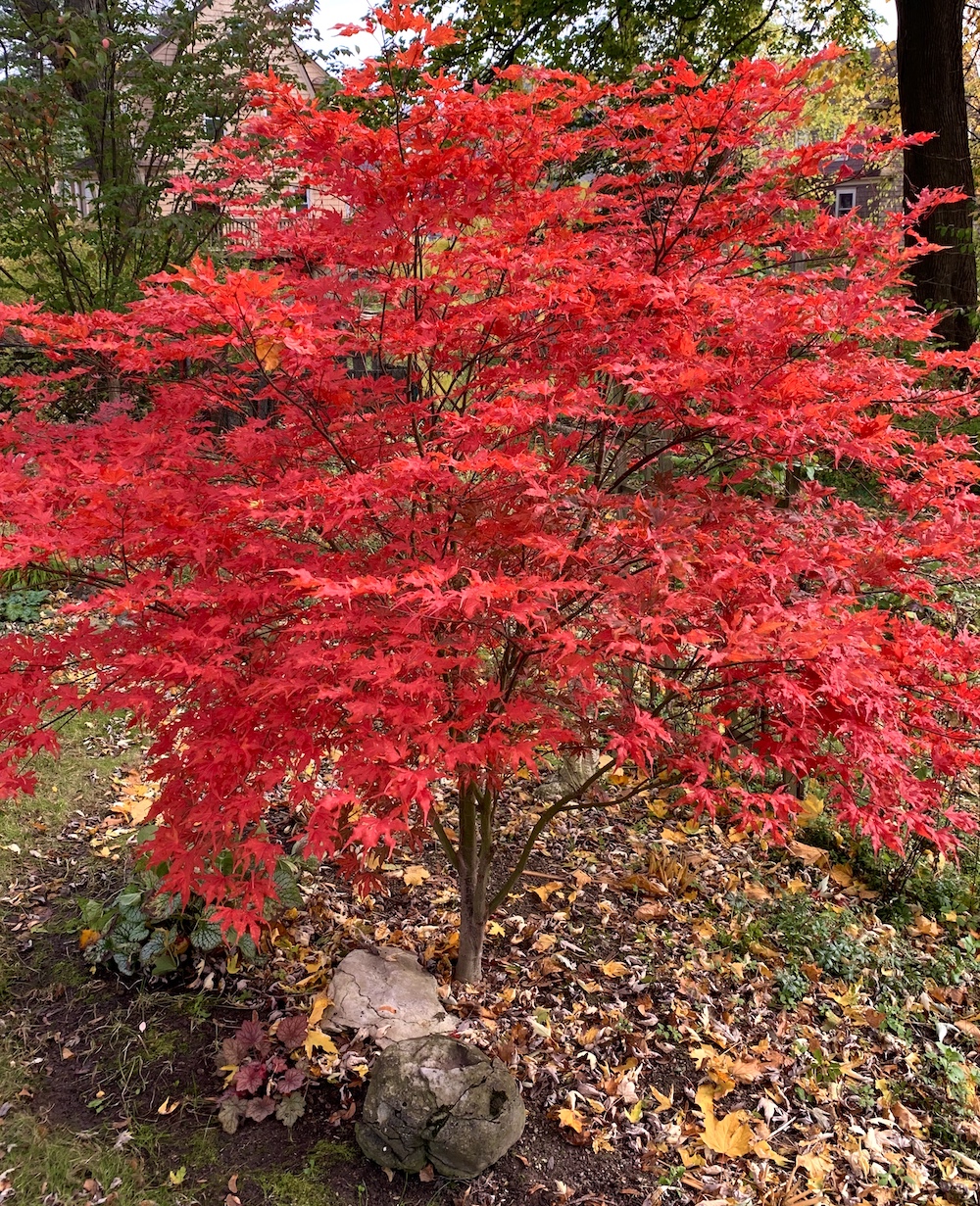
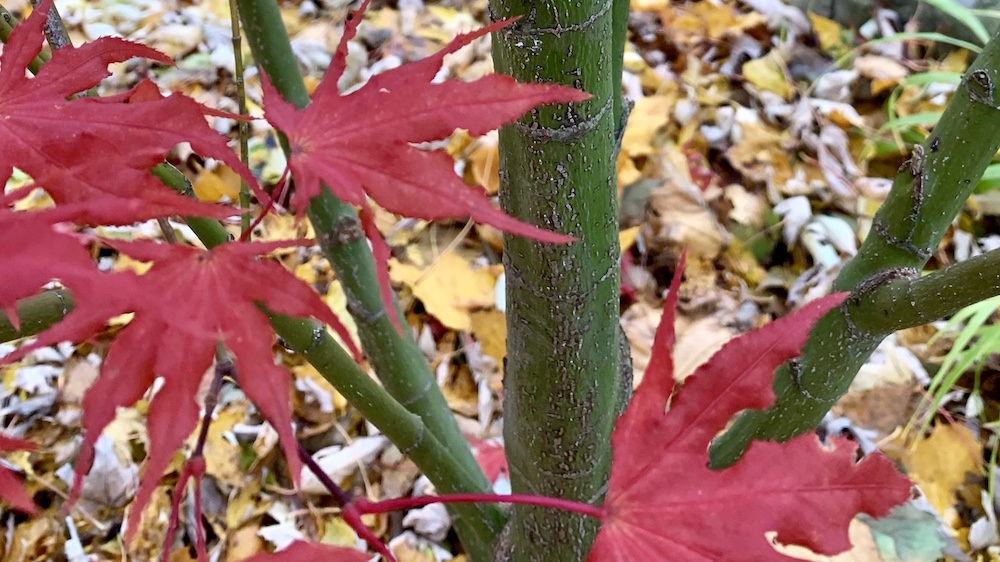
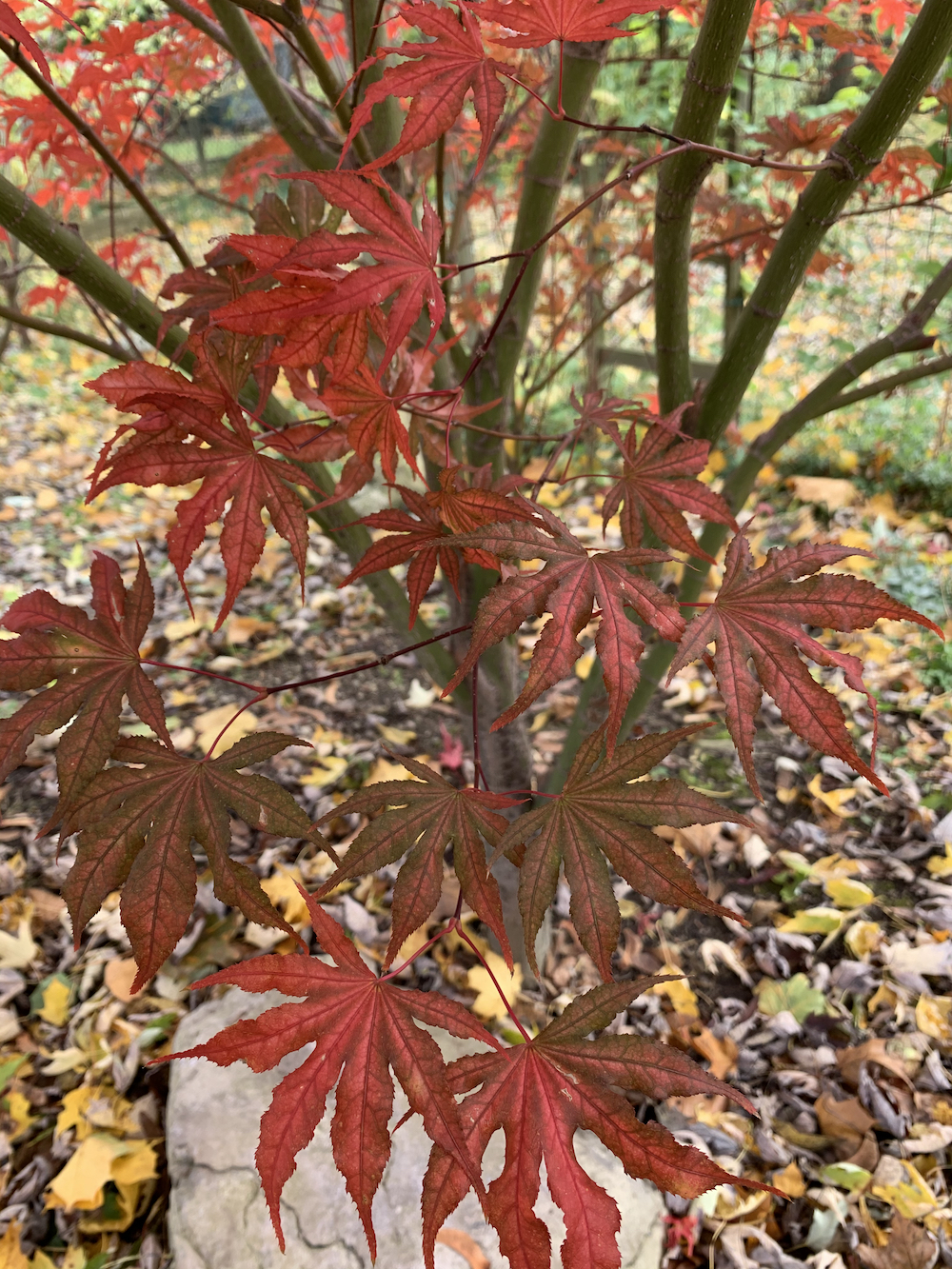
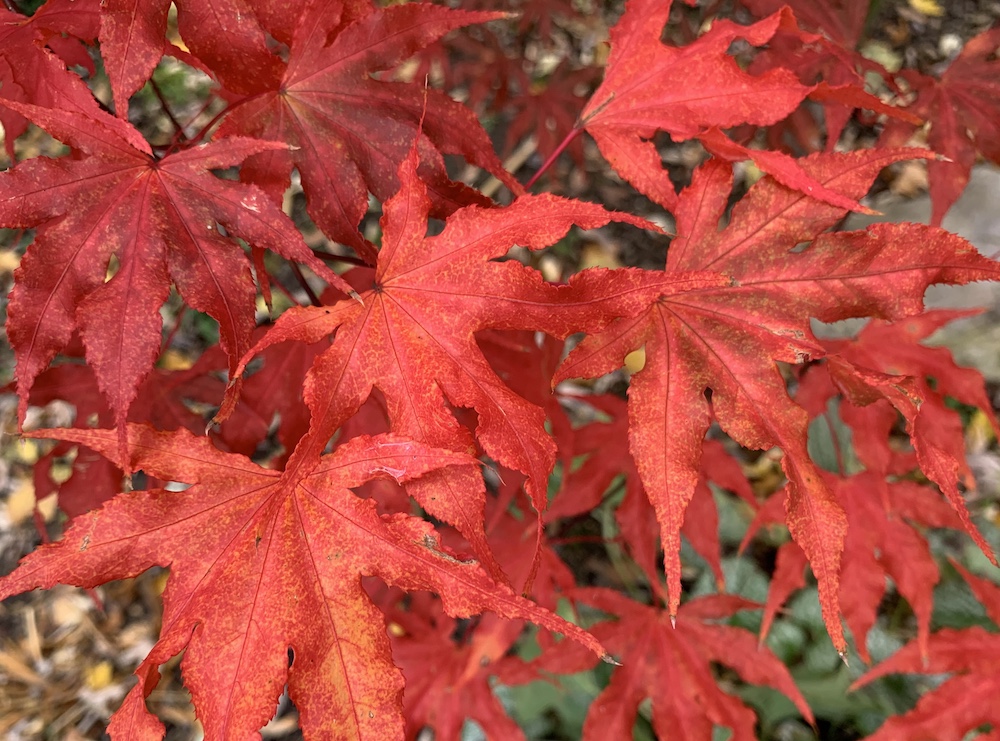
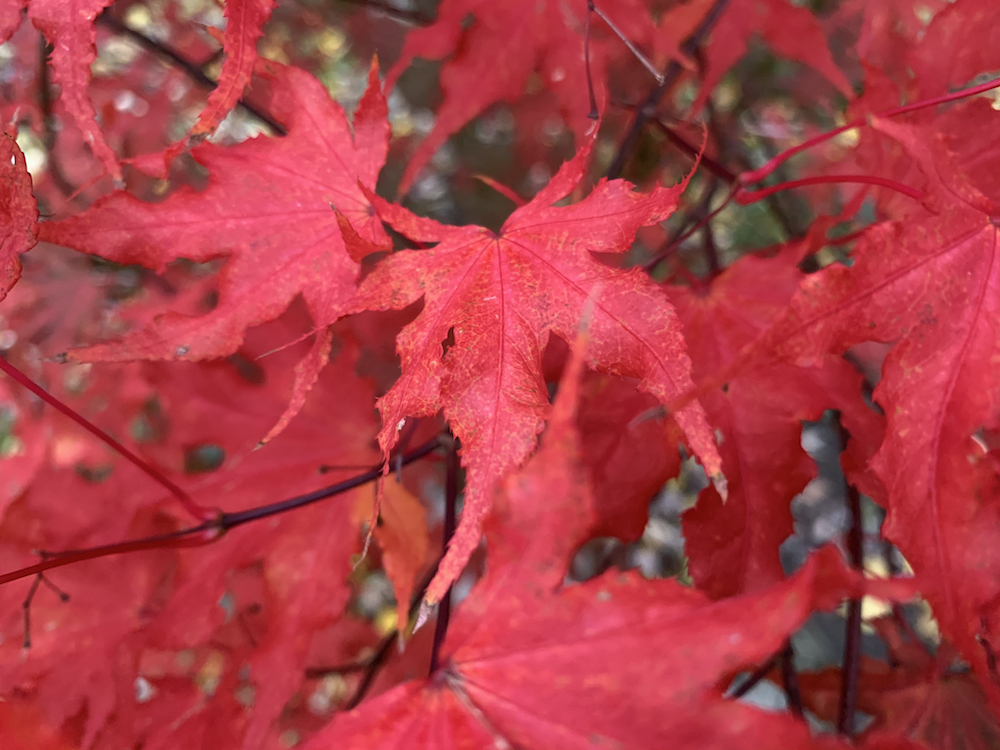
Bark Coloration
As you can see in the photos above, new growth is deep maroon and reddish brown, and older wood is a beautifully saturated pea green. It’s a stunning shift from to see the colors change from warm tones in spring to these cooler green tones in later summer.
Size, Habit, Hardiness
The Sawa Chidori Japanese maple is an upright tree that grows to about 15 feet tall and 8-10 feet wide at maturity. It generally grows about twelve inches per year.
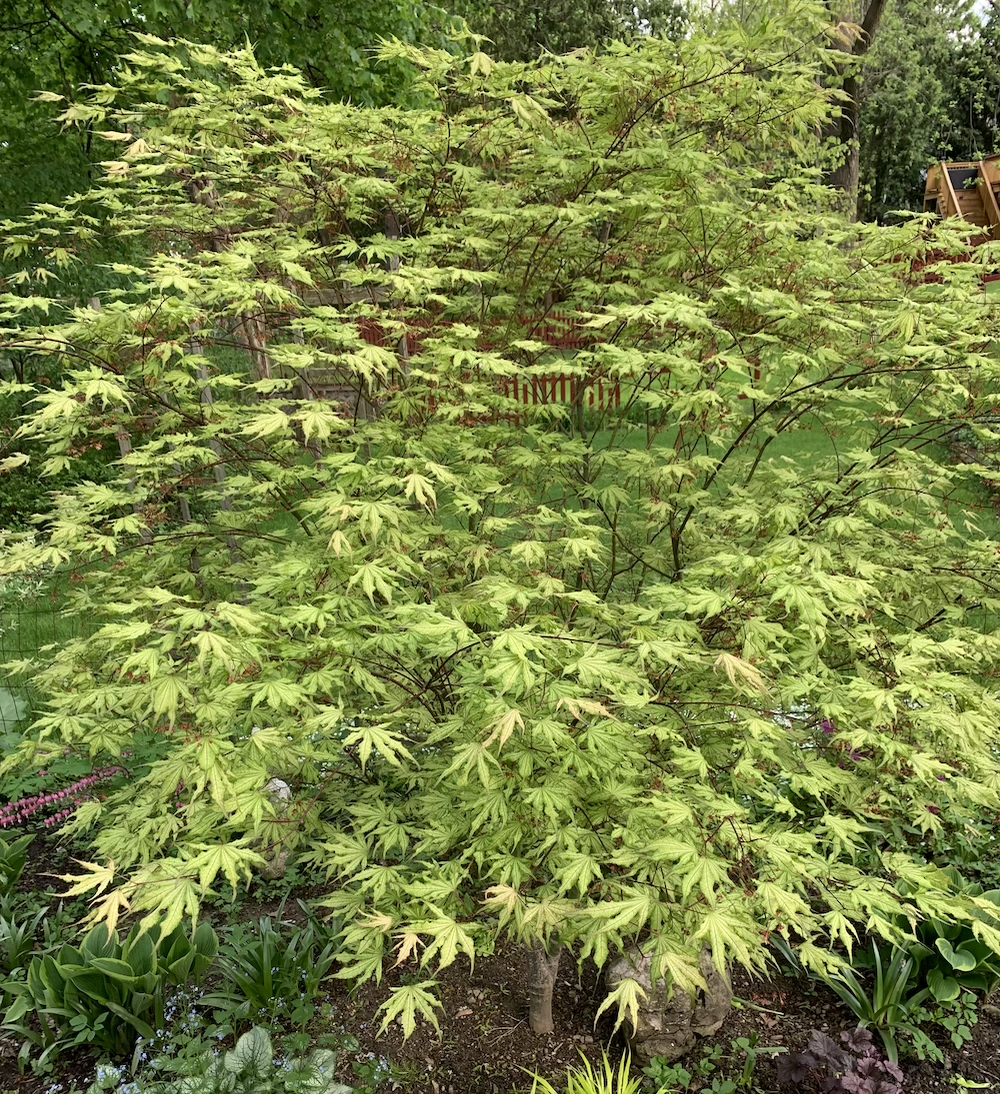
This cultivar is quite full and bushy when healthy. Therefore, you may wish to prune it lightly to expose the green bark and the pale leaves within.
Acer Palmatum Sawa Chidori prefers mostly shade to retain more reticulated coloring. However, it will tolerate some sun without burning too badly. The tree is hearty within zones 5a – 8b.
Other Reticulated Japanese Maples
If you really love Sawa Chidori, you should explore some other reticulated trees. Here’s a short list of some of our favorites:
Buy Sawa Chidori
You can buy Sawa Chidori from our online maple store. If we seem to be sold out, or you’d like to purchase a larger specimen than what we have listed, just send us an email. We frequently have, or can get, trees that aren’t listed in our website store.
